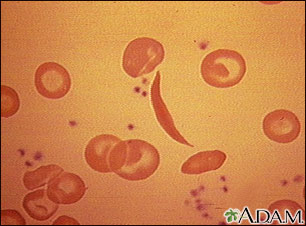Regenerative Medicine Gets a Boost
Blood disorders are likely to be the first targets for therapy because corrected cells can easily be transferred back to the patient via bone-marrow transplants. _TechnologyReview
 Salk Institute researchers in La Jolla have demonstrated a technique that opens the door to cures for several genetic blood diseases. It involves taking a patient's skin cells, treating them genetically to correct the inherited disorder, next turning the skin cells into induced pluripotent stem cells (iPS), then differentiating those iPS into progenitor cells. These progenitor cells can be implanted into the patient to provide a supply of normal blood cells.
Salk Institute researchers in La Jolla have demonstrated a technique that opens the door to cures for several genetic blood diseases. It involves taking a patient's skin cells, treating them genetically to correct the inherited disorder, next turning the skin cells into induced pluripotent stem cells (iPS), then differentiating those iPS into progenitor cells. These progenitor cells can be implanted into the patient to provide a supply of normal blood cells."This is an exciting bit of science," says Chris Mason, a professor of regenerative medicine at University College London, who was not directly involved in the research. "It's likely to be the first of a slew of similar papers that may offer hope for conditions where today there is no real therapy, let alone a cure."If the bone marrow can be "re-stocked" with viable normal blood progenitor cells, the inherited blood disorder may indeed be cured. The concept can be extended to other inherited and acquired genetic diseases with extensive work.
So far, Belmonte's approach is applicable only to diseases in which the genetic defect that underlies the disease has been identified. "But there are quite a few of these--and the number will increase," says Mason. Blood disorders are likely to be the first targets for therapy because corrected cells can easily be transferred back to the patient via bone-marrow transplants.
Belmonte adds that in the future, the correction of more-complex genetic disorders might become possible, thereby significantly increasing the number of diseases that might be treated with altered iPS cells. _TechnologyReview
Such approaches to cell and tissue replacement open the door to significant extension of maximum life span.
Taken from an earlier post at Al Fin
Labels: regenerative medicine

0 Comments:
Post a Comment
Subscribe to Post Comments [Atom]
<< Home